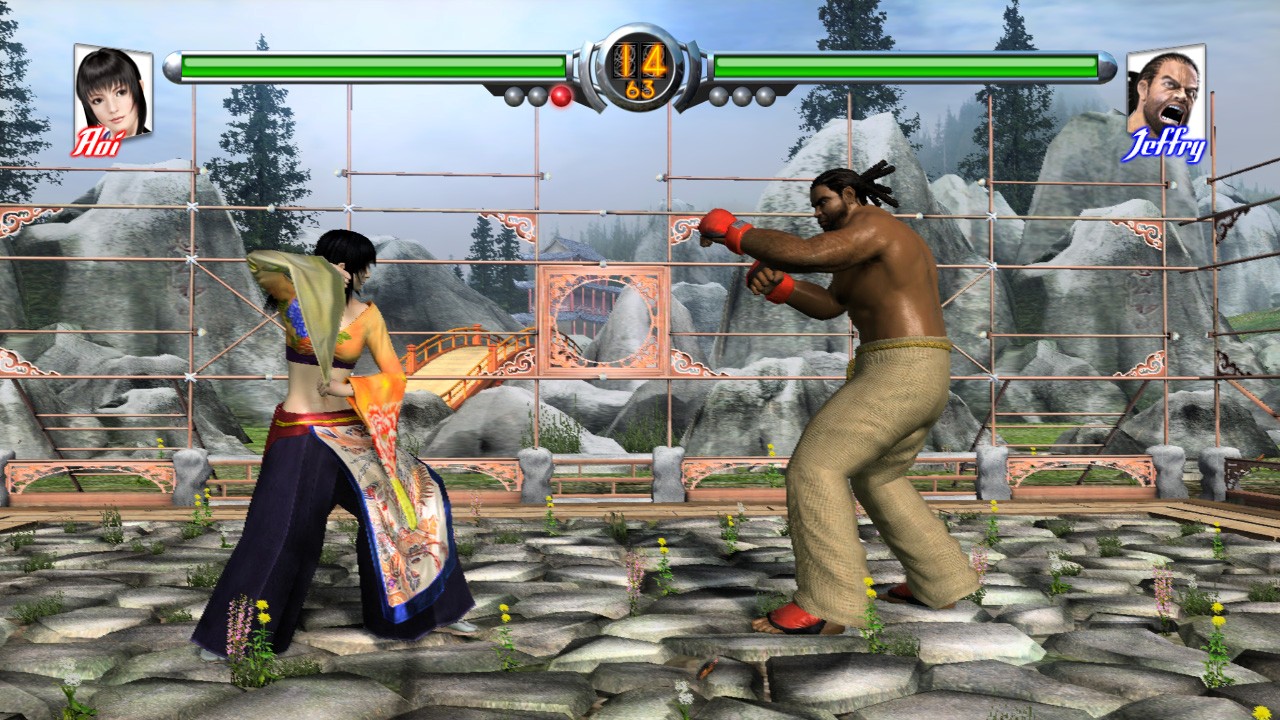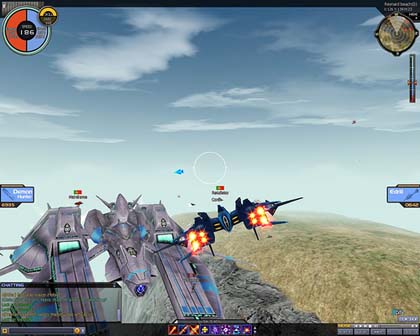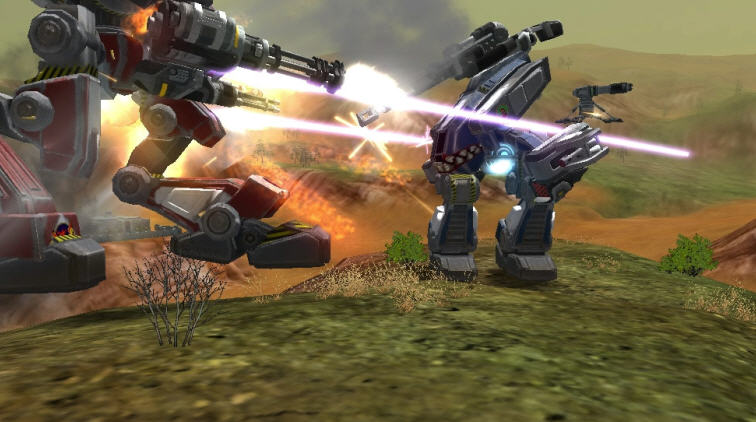Fight Games Free Detail
Fighting games are a type of action game where on-screen characters fight each other.[1][2][3] These games typically feature special moves that are triggered using rapid sequences of carefully timed button presses and joystick movements. Games traditionally show fighters from a side-view, even as the genre has progressed from two-dimensional (2D) to three-dimensional (3D) graphics.[1] Street Fighter II, though not the first fighting game, popularized and standardized the conventions of the genre,[4] and similar games released prior to Street Fighter II have since been more explicitly classified as fighting games.[3][4] Fighting games typically involve hand-to-hand combat, but may also feature melee weapons.[5]
This genre is distinct from beat 'em ups, another action genre involving combat, where the player character must fight many weaker enemies at the same time.[3] During the 1980s publications used the terms "fighting game" and "beat 'em up" interchangeably, along with other terms such as "martial arts simulation" (or more specific terms such as "judo simulator").[6][7][8] With hindsight, critics have argued that the two types of game gradually became dichotomous as they evolved, though the two terms may still be conflated.[3][9] Fighting games are sometimes grouped with games that feature boxing or wrestling.[5][9] Serious boxing games belong more to the sports game genre than the action game genre, as they aim for a more realistic model of boxing techniques, whereas moves in fighting games tend to be highly exaggerated models of Asian martial arts techniques.[1] As such, boxing games and wrestling games are often described as distinct genres, without comparison to fighting games.[10][11]
Fighting games find their origin in boxing games but evolved towards battles between characters with fantastic abilities and complex special maneuvers.[41] Sega's black and white boxing game Heavyweight Champ, which was released in 1976, is considered the first video game to feature fist fighting.[42] 1979's Warrior is another title sometimes credited as one of the first fighting games.[19] In contrast to Heavyweight Champ and most later titles, Warrior was based on sword fighting duels and used a bird's eye view.[3] In 1983, Sega released another boxing game Champion Boxing,[43] which was Yu Suzuki's debut title at Sega.[44][45] However, Data East and its related developer Technōs Japan's Karate Champ from 1984 is credited with establishing and popularizing the one-on-one fighting game genre.[46] In it, a variety of moves could be performed using the dual-joystick controls, it used a best-of-three matches format like later fighting games, and it featured training bonus stages. It went on to influence Konami's 1985 release Yie Ar Kung Fu,[46] which expanded on Karate Champ by pitting the player against a variety of opponents, each with a unique appearance and fighting style.[46][47] The player could also perform up to sixteen different moves,[48] including projectile attacks.[49] Also released in 1985, martial arts game The Way of the Exploding Fist achieved critical success and subsequently afforded the burgeoning genre further popularity.[8][50] Numerous other game developers tried to imitate the financial successes of Karate Champ, Yie Ar Kung-Fu and The Way of the Exploding Fist with similar games; Data East took unsuccessful legal action against Epyx over the computer game International Karate.[51]
Both Karate Champ and Yie Ar Kung Fu later provided a template for Capcom's Street Fighter in 1987.[4] Street Fighter found its own niche in the gaming world,[4] partially because many arcade game developers in the 1980s focused more on producing beat-em-ups and shoot 'em ups.[52] Part of the game's appeal was the use of special moves that could only be discovered by experimenting with the game controls, which created a sense of mystique and invited players to practice the game,[53] although similar controller motions used for grappling maneuvers in the earlier Brian Jacks Uchi Mata were deemed too difficult.[8] Following Street Fighter's lead, the use of command-based hidden moves began to pervade other games in the rising fighting game genre.[53] Street Fighter also introduced other staples of the genre, including the blocking technique as well as the ability for a challenger to jump in and initiate a match against a player at any time. The game also introduced pressure-sensitive controls that determine the strength of an attack, though due to causing damaged arcade cabinets, Capcom replaced it soon after with a six-button control scheme offering light, medium and hard punches and kicks, which became another staple of the genre.[54] Meanwhile, home game consoles largely ignored the genre. Budokan: The Martial Spirit was one of few releases for the Sega Genesis but was not as popular as games in other genres.[52] Technical challenges limited the popularity of early fighting games. Programmers had difficulty producing a game that could recognize the fast motions of a joystick, and so players had difficulty executing special moves with any accuracy.[4][52]
Fighting games are a type of action game where on-screen characters fight each other.[1][2][3] These games typically feature special moves that are triggered using rapid sequences of carefully timed button presses and joystick movements. Games traditionally show fighters from a side-view, even as the genre has progressed from two-dimensional (2D) to three-dimensional (3D) graphics.[1] Street Fighter II, though not the first fighting game, popularized and standardized the conventions of the genre,[4] and similar games released prior to Street Fighter II have since been more explicitly classified as fighting games.[3][4] Fighting games typically involve hand-to-hand combat, but may also feature melee weapons.[5]
This genre is distinct from beat 'em ups, another action genre involving combat, where the player character must fight many weaker enemies at the same time.[3] During the 1980s publications used the terms "fighting game" and "beat 'em up" interchangeably, along with other terms such as "martial arts simulation" (or more specific terms such as "judo simulator").[6][7][8] With hindsight, critics have argued that the two types of game gradually became dichotomous as they evolved, though the two terms may still be conflated.[3][9] Fighting games are sometimes grouped with games that feature boxing or wrestling.[5][9] Serious boxing games belong more to the sports game genre than the action game genre, as they aim for a more realistic model of boxing techniques, whereas moves in fighting games tend to be highly exaggerated models of Asian martial arts techniques.[1] As such, boxing games and wrestling games are often described as distinct genres, without comparison to fighting games.[10][11]
Fighting games find their origin in boxing games but evolved towards battles between characters with fantastic abilities and complex special maneuvers.[41] Sega's black and white boxing game Heavyweight Champ, which was released in 1976, is considered the first video game to feature fist fighting.[42] 1979's Warrior is another title sometimes credited as one of the first fighting games.[19] In contrast to Heavyweight Champ and most later titles, Warrior was based on sword fighting duels and used a bird's eye view.[3] In 1983, Sega released another boxing game Champion Boxing,[43] which was Yu Suzuki's debut title at Sega.[44][45] However, Data East and its related developer Technōs Japan's Karate Champ from 1984 is credited with establishing and popularizing the one-on-one fighting game genre.[46] In it, a variety of moves could be performed using the dual-joystick controls, it used a best-of-three matches format like later fighting games, and it featured training bonus stages. It went on to influence Konami's 1985 release Yie Ar Kung Fu,[46] which expanded on Karate Champ by pitting the player against a variety of opponents, each with a unique appearance and fighting style.[46][47] The player could also perform up to sixteen different moves,[48] including projectile attacks.[49] Also released in 1985, martial arts game The Way of the Exploding Fist achieved critical success and subsequently afforded the burgeoning genre further popularity.[8][50] Numerous other game developers tried to imitate the financial successes of Karate Champ, Yie Ar Kung-Fu and The Way of the Exploding Fist with similar games; Data East took unsuccessful legal action against Epyx over the computer game International Karate.[51]
Both Karate Champ and Yie Ar Kung Fu later provided a template for Capcom's Street Fighter in 1987.[4] Street Fighter found its own niche in the gaming world,[4] partially because many arcade game developers in the 1980s focused more on producing beat-em-ups and shoot 'em ups.[52] Part of the game's appeal was the use of special moves that could only be discovered by experimenting with the game controls, which created a sense of mystique and invited players to practice the game,[53] although similar controller motions used for grappling maneuvers in the earlier Brian Jacks Uchi Mata were deemed too difficult.[8] Following Street Fighter's lead, the use of command-based hidden moves began to pervade other games in the rising fighting game genre.[53] Street Fighter also introduced other staples of the genre, including the blocking technique as well as the ability for a challenger to jump in and initiate a match against a player at any time. The game also introduced pressure-sensitive controls that determine the strength of an attack, though due to causing damaged arcade cabinets, Capcom replaced it soon after with a six-button control scheme offering light, medium and hard punches and kicks, which became another staple of the genre.[54] Meanwhile, home game consoles largely ignored the genre. Budokan: The Martial Spirit was one of few releases for the Sega Genesis but was not as popular as games in other genres.[52] Technical challenges limited the popularity of early fighting games. Programmers had difficulty producing a game that could recognize the fast motions of a joystick, and so players had difficulty executing special moves with any accuracy.[4][52]
Fight Games Free
Fight Games Free
Fight Games Free
Fight Games Free
Fight Games Free
Fight Games Free
Fight Games Free
Fight Games Free
Fight Games Free
Fight Games Free
Fight Games Free
Fight Games Free












No comments:
Post a Comment